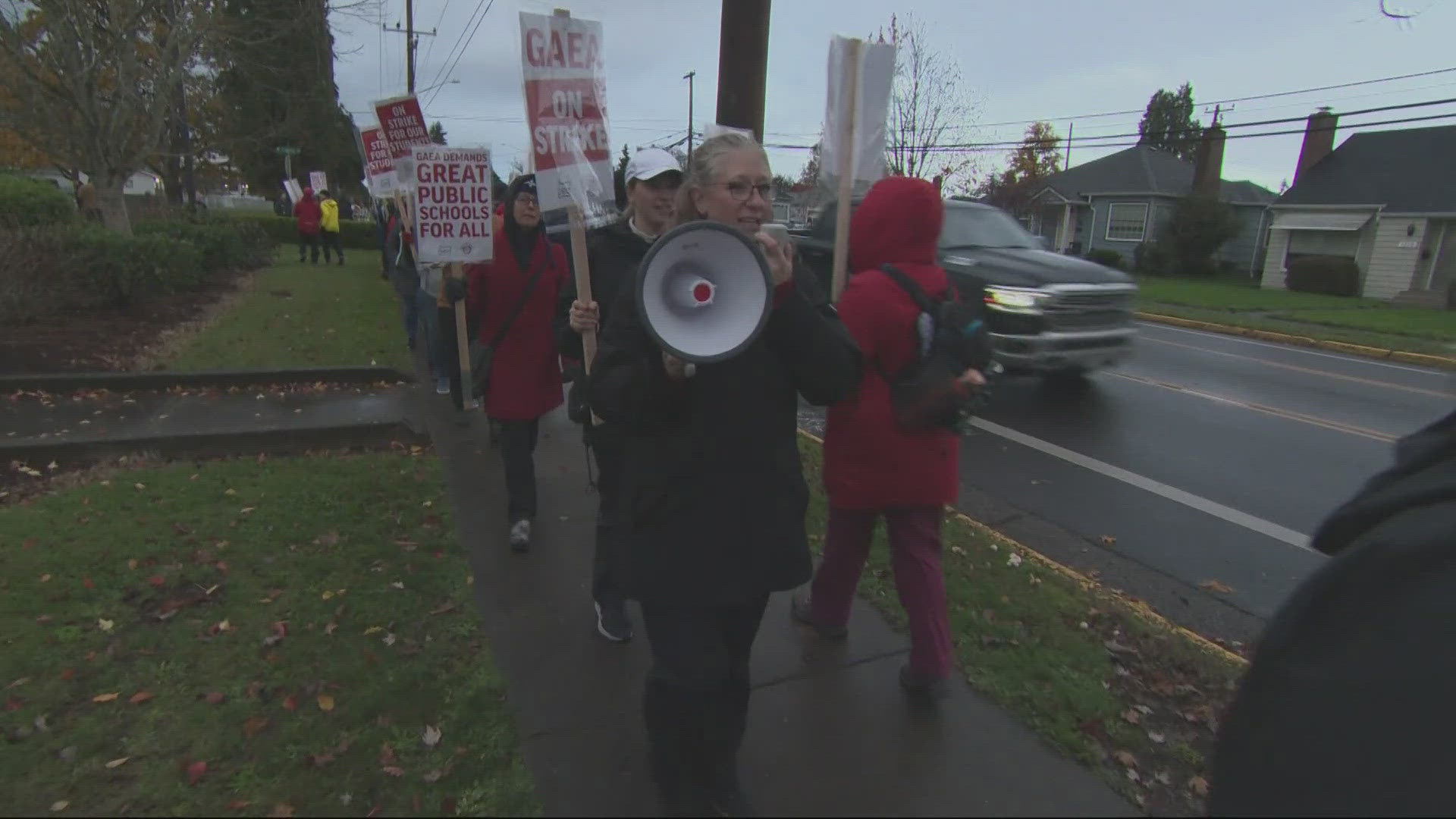ALBANY, Ore. — Hundreds of educators in Albany walked out of class Tuesday morning for the first time in nearly 40 years.
About 600 teachers and other educational staff in Greater Albany Public Schools went on strike after a mediation session between it and the district ended without an agreement.
"We just don't feel like they hear us," said Ken Beiser, a teacher who is also on the union bargaining team.
Beiser said the union and the school district bargained until 2 a.m. on Tuesday and did not reach a deal.
"There just wasn't sufficient movement," Beiser said.
The union and the district have been bargaining for the past nine months and progress has been slow. Beiser said 20 articles of the next 3-year contract are still not settled.
In late October, teachers voted overwhelmingly — 92% — to authorize the strike.
"This has been a long time coming," said Erik Ihde, a social studies teacher at West Albany High School.
Teachers and educators are asking for increased safety measures, better pay and smaller class sizes.
"I once had a class size of 42," Ihde said. "Over the last 28 years, we've never pushed back like this, and I've steadily seen my class size increase to unhealthy numbers."
The school district canceled class on Tuesday in anticipation of the strike. Some students and band members came to school despite the closure to show support for their teachers.
"The general sentiment among the student body is that the district has been failing us," said Jerry Wang, a junior at West Albany High School.
Many students and teachers believe it's time for a change.
"It's a historic day in Albany. It's a historic day for education in Oregon," Beiser said.
In a press conference Tuesday afternoon, Greater Albany Superintendent Andy Gardner pledged to continue working with the teachers union to reach an agreement quickly. He complimented the teachers and acknowledged that they are "so critical to what we do."
Mediation between the district and the union has been ongoing since Sept. 10, with five full-day sessions. Most of those have run into the evenings, Gardner said.
According to Gardner, the district and union negotiators were very close to an agreement on most major issues late Monday night, but the sticking point came down to class sizes. He said that the union has insisted on hard class size caps, something the district is unable or unwilling to accommodate.
Behind the class size demand are concerns about student behavioral issues, Gardner suggested. While the district has agreed with the union on ways to better address behavior and offered an "improved process" for determining class sizes, he said the district didn't see how class size caps might help solve behavior problems — calling it "a pretty blunt tool."
Salary was less of an issue in the negotiations, Gardner said. The district was willing to provide a 15% raise for most educators over three years, and an 18% for top teachers in the district, acknowledging that staff had lost money to inflation over the last several years.
The district will be back at the mediation table Wednesday, Gardner added, in hopes of keeping the strike disruption as brief as possible. In the meantime, district classified staff will return to work, and schools will be open to provide meals for students, serviced by bus routes. Maintenance staff will be working on cleaning and repairs while students are not present.
Gardner thanked the local YMCA for expanding its programs as much as possible to accommodate some families in need of child care. However, he acknowledged that many parents were having to use precious time off or going to other lengths in order to care for children kept home from school.

